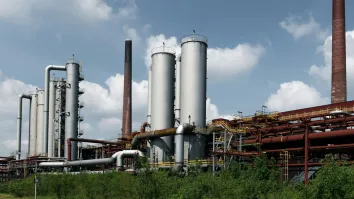5 factors that make cities greener
By Lothar HerrmannThe current world population of 7.2 billion is projected to increase by 1 billion over the next 12 years and is estimated to reach 9.6 billion by 2050[1]. As of 2010, more than half of the population lives in urban areas.
By 2030, six out of every 10 people will live in a city, and by 2050, this proportion will increase to seven out of 10 people[2].
More and more people will need water and electricity, the amount of waste will increase, traffic will worsen, and sewage systems will be stretched to the limits of their capacity. All of this has the potential to negatively impact the environment and the economies of urban centers — as well as the health of their residents.
Asian cities have twice as many people on average as European urban centers. Income levels also vary sharply. The extent to which cities are adopting green practices vary greatly.
However, comparisons of city indices show that many metropolitan areas have already improved their environmental performance by making infrastructure more efficient or by implementing ambitious policies that are proving successful. Here are five key factors that make for greener cities.
1. Environmental planning at city level
Siemens’ Green City Index, the research series that measures the environmental performance of over 120 cities, points out that the best ranked cities have one main thing in common – they do their own planning. Global organizations and governments can impose environmental standards, but simply adhering to these standards is insufficient to ensure environmental sustainability.
Each city has its unique issues that overarching global standards might not be able to resolve. The onus is on city officials to address these issues specifically.
2. A holistic approach
Every city has interrelated environmental and infrastructure issues. For example, Singapore’s transport network, carbon dioxide (CO2) levels and work-life balance are all intertwined and should not be addressed in isolation, but in a holistic manner by policy makers.
Solutions such as multi-modal transport simplify travel and make it easier for commuters to optimize the usage of various transport modes to reach their destination. Singaporeans could then retain their driving aspirations and yet help to limit CO2 emissions.
The adoption of such schemes paves the way for more efficient and greener commuting.
3. Wealth isn’t everything
Environmental protection is not an affair that only the rich can indulge in. Every citizen needs to adopt environmental protection measures.
By helping to protect the environment and conserving resources, city dwellers can keep energy demand and supply under control for their cities in the long run.
4. People and the environment
Health issues and poverty are closely related with environmental problems. All three aspects have to be viewed together.
A city that properly disposes waste and sewage provides more people with access to electricity and drinking water, thus helping to reduce illness among its population. Building the associated infrastructure also creates jobs and prosperity.
Environmental protection measures are also easier to implement, and are more successful, if supported by citizens. Citizens need to be aware of the severity of environmental issues and how they can actually do their part to minimize the negative impact posed by urbanization.
With citizen involvement greening cities from the ground up, cities have a greater chance of achieving sustainability.
5. Right technologies
Technology is the assistive solution to most problems. Technologies for information processing, building sustainability and production optimization, help achieve, not only cost efficiency, but energy efficiency as well.
With the right technologies in place, pollution levels and energy consumption can be reduced. London lowered its CO2 emissions by 44 percent solely through the use of efficient technologies, and without residents having to change their energy usage habits.
Cities are often apprehensive about the high initial costs involved, but experience has shown that once savings start kicking in, cities will start witnessing returns on investments.
The grass can be greener on all sides
Governments are faced with the pressure to ensure that their cities are sustainable even while they are progressing development plans and ensuring quality of life for its citizens. Addressing the world’s megatrends – such as urbanization, demographic change, and climate change – is not an easy task.
Technological advances can help to provide enhanced mobility and security, enabling more efficient city management for highly urbanized metropolitan cities to create green, sustainable cities of the future.




















 Advertise
Advertise






